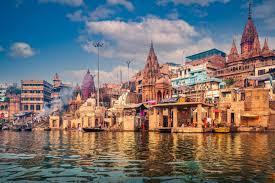Kashi, also known as Varanasi or Banaras, is deeply rooted in Hindu mythology and is considered the eternal home of Lord Shiva, one of the principal deities in Hinduism. The city is believed to have been created by Shiva himself and is regarded as a place where life and death are closely intertwined.
The Kashi Vishwanath Temple, dedicated to Lord Shiva, is one of the twelve Jyotirlingas and a significant pilgrimage site. It is said that dying in Kashi, particularly by the banks of the Ganges, grants moksha, liberation from the cycle of birth and death. The Ganga herself is personified as a goddess in Hindu mythology, purifying the soul of devotees.
Kashi is also linked to the Skanda Purana and the Kashi Mahatmya, which describe the city as a center of divine energy, where Lord Shiva’s cosmic dance, Ananda Tandava, symbolizes creation, preservation, and destruction. It is believed that Kashi is the only city that has never been destroyed, symbolizing eternal life.
Thus, in Hindu mythology, Kashi is not just a city—it is a divine realm offering spiritual transformation and the opportunity for eternal liberation. The city represents the eternal cycle of life, death, and rebirth, offering a space where the mortal world and the divine realm intertwine, allowing devotees to transcend the physical and connect with the divine essence, ultimately guiding them toward spiritual enlightenment and liberation.

